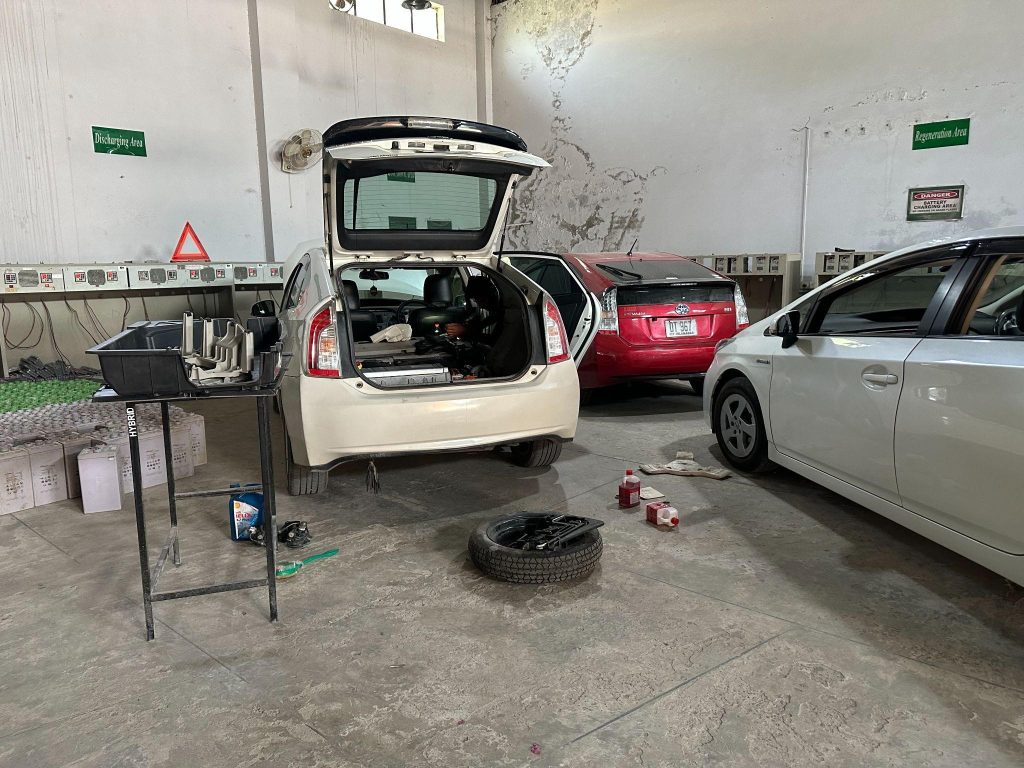
Demystifying Hybrid Battery Materials: Unveiling the Core Components
In the realm of hybrid vehicles, the beating heart lies within the hybrid battery. Understanding the intricate components that make up these powerhouses is essential for anyone delving into the world of hybrids.
In this blog, we embark on a journey to unravel the mysteries of hybrid battery materials, shedding light on the fundamental components that power vehicles like the Prius and Aqua.
Cathode Materials: Powering Up the Hybrid Engine
At the heart of hybrid batteries are cathode materials, playing a pivotal role in energy storage. Commonly utilized materials include lithium cobalt oxide and lithium manganese oxide.
These materials facilitate the efficient movement of ions, enhancing the overall performance of hybrid batteries. Recent advancements in cathode technology promise even greater energy density and longevity, propelling the capabilities of hybrid vehicles to new heights.

Anode Materials: The Foundation of Energy Release
Anode materials, such as graphite, silicon, and lithium titanate, are crucial for the release of stored energy. The exploration of these materials provides insights into the challenges and breakthroughs in optimizing anode performance. Silicon, for instance, shows promise in increasing energy capacity, while ongoing research aims to address associated challenges and make hybrid batteries more efficient.
Electrolyte Solutions: Enabling Ion Movement
The electrolyte solution acts as a conduit for ion movement between the cathode and anode. Comparing liquid electrolytes to solid-state alternatives, we examine the trade-offs and innovations in electrolyte technology.
Advances in solid-state electrolytes hold the potential to improve safety and energy density, contributing to the evolution of hybrid battery systems.
Separator Materials: Preventing Short Circuits
Separator materials form a crucial barrier, preventing short circuits within hybrid batteries. Polyethylene and polypropylene are commonly used materials in this role.
We delve into the significance of separators in ensuring the safety and reliability of hybrid battery systems, while also exploring recent advancements in separator technology.
Binder Materials: Holding it All Together
Binders are the unsung heroes, holding the various components of hybrid batteries together. Polyvinylidene fluoride and similar materials play a vital role in maintaining structural integrity.
Innovations in binder technology contribute to the overall efficiency and durability of hybrid batteries, a factor that is particularly important for vehicles like the Prius.

Additives and Conductive Agents: Enhancing Efficiency
Additives and conductive agents boost the conductivity of hybrid batteries, improving their overall efficiency. In this section, we explore how these components work in tandem to optimize performance and examine the ongoing research into novel additives and conductive agents that could shape the future of hybrid battery technology.
Challenges and Solutions in Hybrid Battery Materials: Navigating the Road Ahead
Despite the progress, challenges persist in the development and use of hybrid battery materials. From environmental concerns to resource availability, we analyze the hurdles and discuss ongoing research aimed at overcoming these obstacles.
Sustainability considerations become increasingly important, especially in regions like Pakistan where the demand for hybrid vehicles is on the rise.
Future Trends and Innovations: A Glimpse into Tomorrow’s Hybrids
As technology marches forward, so too do hybrid battery materials. We explore anticipated future trends and innovations, shedding light on the research and development that could shape the landscape of hybrid batteries.
With an eye on the future, we consider how these advancements might impact the pricing of hybrid batteries in regions like Pakistan.
Conclusion
In concluding our exploration of hybrid battery materials, we reflect on the critical role each component plays in the functioning of hybrid vehicles. From the Prius hybrid battery to the Aqua hybrid battery, the evolution of these power sources is marked by continuous innovation.
As hybrid battery technology continues to advance, the prospect of a more sustainable and efficient future for transportation becomes increasingly tangible. The journey to demystify hybrid battery materials is ongoing, and as we unveil the core components, we gain a deeper appreciation for the power within these eco-friendly marvels.

1 Comments
Thanks for sharing. I read many of your blog posts, cool, your blog is very good.